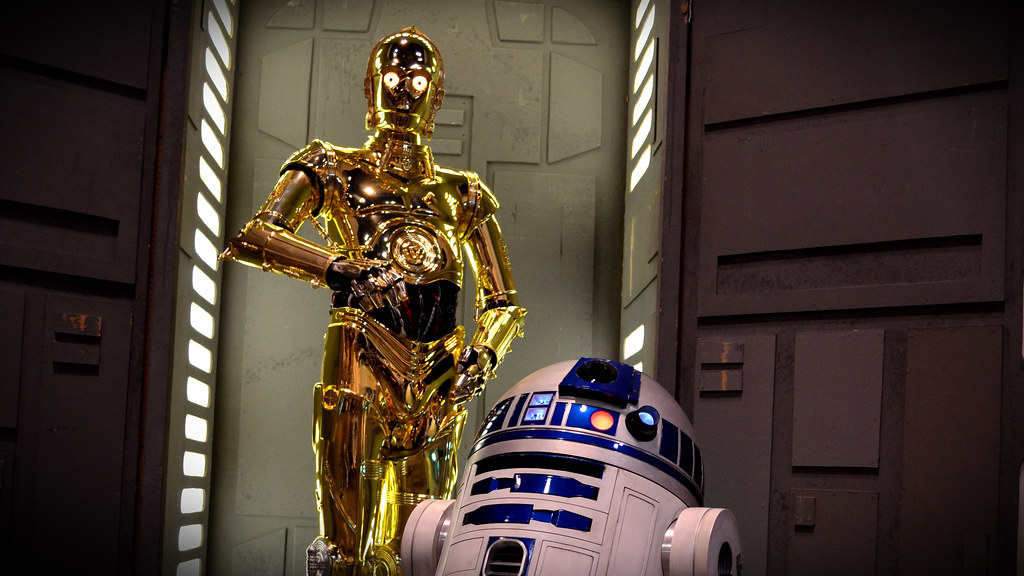 |
| The automata have also been a usual topic in movies. Frame of HUGO by Martin Scorsese |
In Homero's "Iliad" -dated in the 8th century B.C.- some mechanical devices -as an owl- already appear as characters of the poem. Those descriptions, as well as the some characters of the Greek mythology, let us know how this old civilization fantasized with the idea of mechanical instrument imitating real-life motions. However, -except for some studies in China in the 2nd century- not much documents have shown this interest about automata until the great splendor of the Islamic civilization around the 13th century, when Al-Jazari -an Islamic scientist, engineer and writer- described a number of automata in his "Book of Knowledge of Ingenious Mechanical Devices". This book contains great ideas including a band of mechanical musicians or a man who strikes a bell, most of them powered by water or the use of weights.
 |
| Painting depicting the mechanical band |
 |
| Recreation of Da Vinci's automaton based on his notes. |
One of the first examples of an automaton actually built that are known is the "Monkbot". Back in 1560, a Spanish craftsman was ordered to create a monk as a lifelike recreation of Saint Diego. This monk-automaton was powered by a wound spring and uses an assortment of iron cams and levers to move on three small wheels. Also artificial feet step up and down to imitate walking and can articulate some facial gestures.
The years of Enlightenment in Europe between 17th-19th centuries were specially rich in the study of automotive, so it was for the study of automatons as well. The gear assemblies took an important place on the design and the improvement of these machines. This period was the time when the most advanced automatons were crafted and it became an actual business. Three examples are the most remarkable; the first of them was the "Digesting Duck" by Jacques Vaucanson. Jacques had worked before in other automatons as a flute player with artificial lungs that could perform 12 songs, but his masterpiece was this duck that could flap its wings, splash in the water and eat from audience members' hand and defecate on a silver platter. Disgusting or surprising, this invention powered by weights was a success!
The second masterpiece of the 18th century was the "Silver Swan" created by the showman James Cox and the watchmaker John Joseph Merlin in 1773. Powered by three clockwork motors and provided of its own music -thanks to an internal music box-, its levers and springs allow it to bend its neck and open the bill with startling realism. It shocked the crowd, also the novelist Mark Twain said that the automaton had "a living grace about his movement and a living intelligence in his eyes"
After the enlightenment age arrived the time from 1850 until 1910 -often regarded as the golden age of automatons. At that time there were many artisans who earned their living creating clockwork mechanism driven automated devices. The magician Robert Houdin was one of the most famous, indeed great number of his tricks hid some automatons! Then the war struck the World and there were no time for toys, so that is what they were meant to be; simple mechanical toys, until the invention of the computers, micro-chips and the new technologies that could open a huge new world for the lifelike automatons.
 | ||
| Frame of the saga Star Wars, by George Lucas. |
This is the evolution of the idea of "AUTOMATA" that we know in the 21th century, the evolution that give us the tools to create the humanoids we are working on and to keep fantasizing about perfect machines -as some people did thousands of years ago- in books, movies or future projects (just look at the picture above). Thanks to all this giants we now see Automata and robots emerging as a modern art form, a way to create unique pieces and to show our knowledge in fields like technology and engineering. It is time to create and invent, but also time to look at the past, learn from the genius that worked on that fields and improve every day.
Sources and interesting links:
http://www.history.com/news/history-lists/7-early-robots-and-automatons
http://www.mechanical-toys.com/History%20page.htm
http://www.allonrobots.com/automatons.html
http://www.unmuseum.org/notescurator/automata.htm
by Carlos Durango- 2015
No comments:
Post a Comment